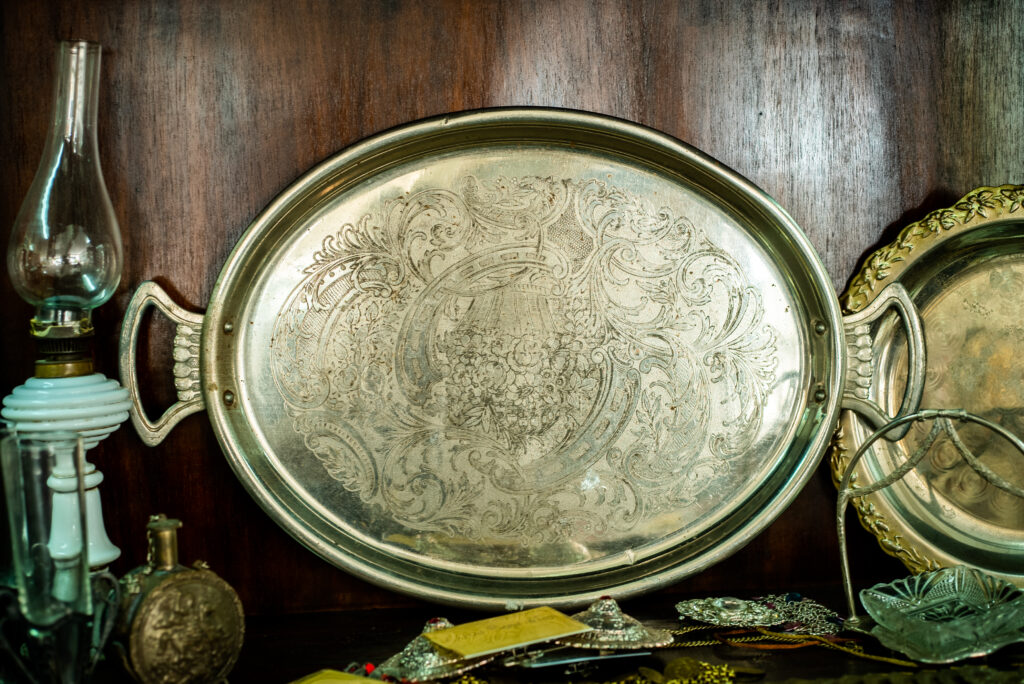
A silver tray, two small vases and a silver flask engraved with the icon of Agios Georgios are all the belongings Ourania Stamatiadou-Koutsogiannis’ grandparents managed to bring with them to Greece. These objects are part of her family history, but also of the history of all refugees. Ourania believes that their value lies in their ability to disseminate and preserve refugee history.
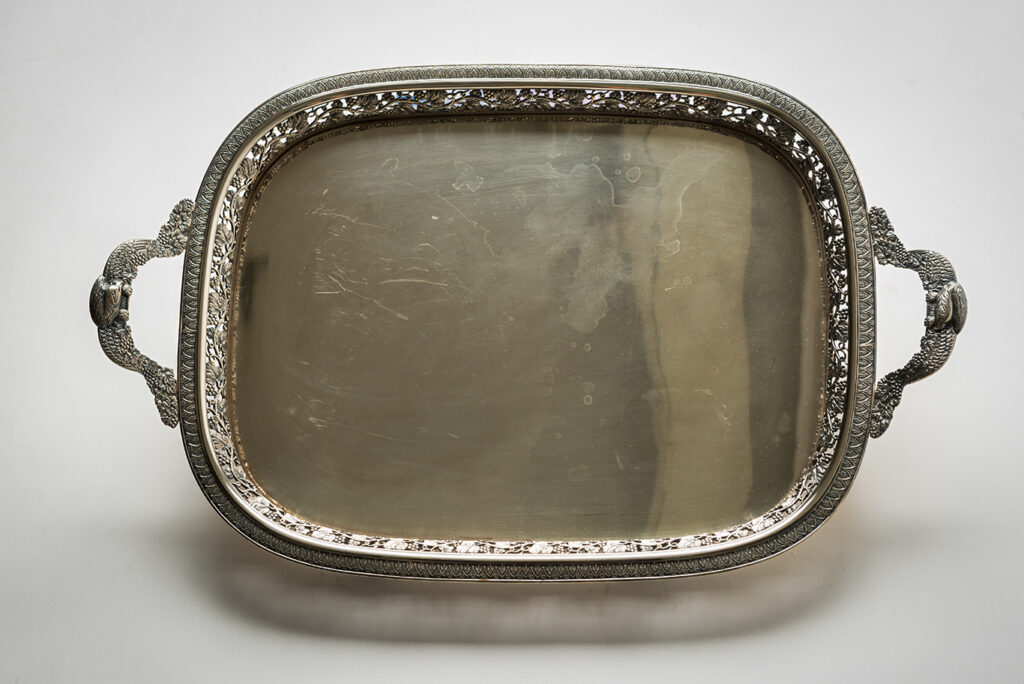
Kleio used this tray in family ceremonies, mainly weddings where it was used as a display for the wedding wreaths. She polished the tray often and passed it on to her daughter, Anna Kyriadou. For Anna, this well-travelled tray encapsulates her family’s history.
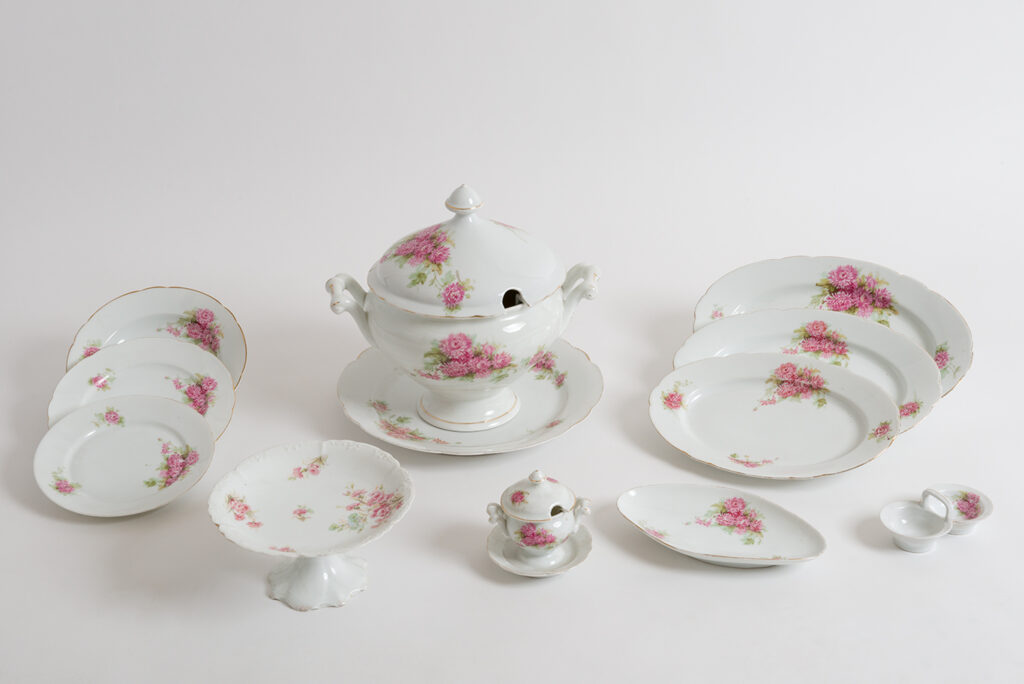
The set was made in Bavaria and bought by Panaretos in Constantinople. It was a gift for Foteini who wanted a china set so that she could throw dinner parties just like her friends. It is uniquely decorated with a chrysanthemum pattern, while most china sets of the time were adorned with roses.

The embroidery adorned with the name of Eirini Chantzara was passed on to her daughter, Popi, and then to her granddaughter and namesake, Eirini, who chose to donate it to the Folklife and Ethhnological Museum of Macedonia-Thrace in order to ensure its preservation.
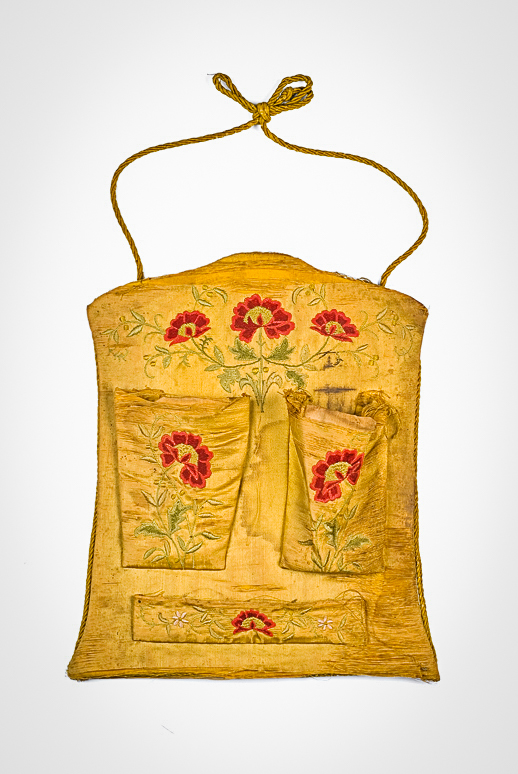
The Museum of the Pontian Women’s Association, called ‘Embroidering memory’, was inaugurated in 2005. Several of the objects in its collection came from Pontus and Russia, traversing space and time. Among them, the embroidered hairbrush case of Elisavet Theodoridou (nee Grammatikopoulou) which came from Kars, Russia.
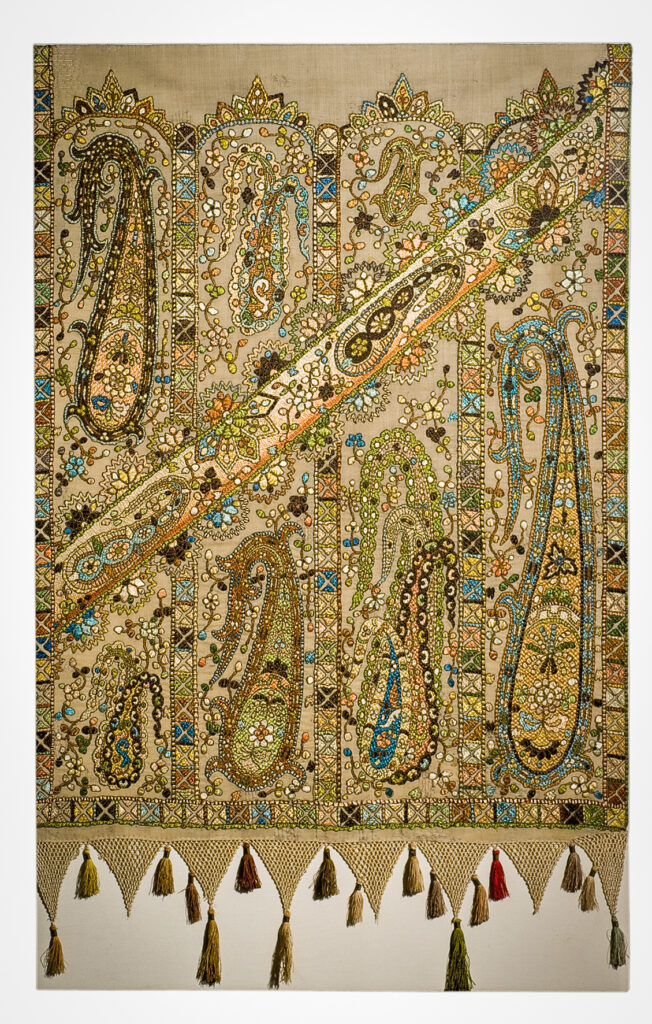
The Museum of the Pontian Women’s Association, called ‘Embroidering memory’, was inaugurated in 2005. Several of the objects in its collection came from Pontus and Russia, traversing space and time. Among them, an embroidery from Trapezounta known as a ‘kourtinaki’ or ‘keimilio’, one of the two curtain panels covering an icon display embroidered in a paisley pattern (lahuri in Turkish), a pattern widely used in Pontus.
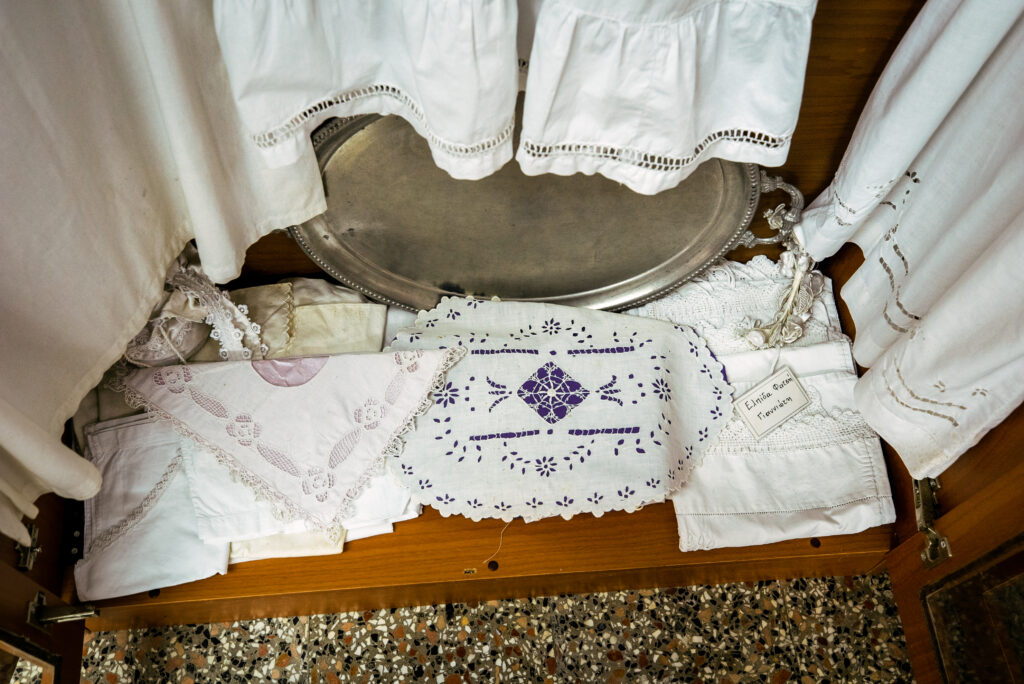
The offices of the ‘Englezonisi’ Cultural Association of Asia Minor Greeks of Nea Ionia, Magnisia host a small exhibition of household items, clothes, and linen brought over by the refugees. Among them, the handmade embroideries and dowries of girls and women.
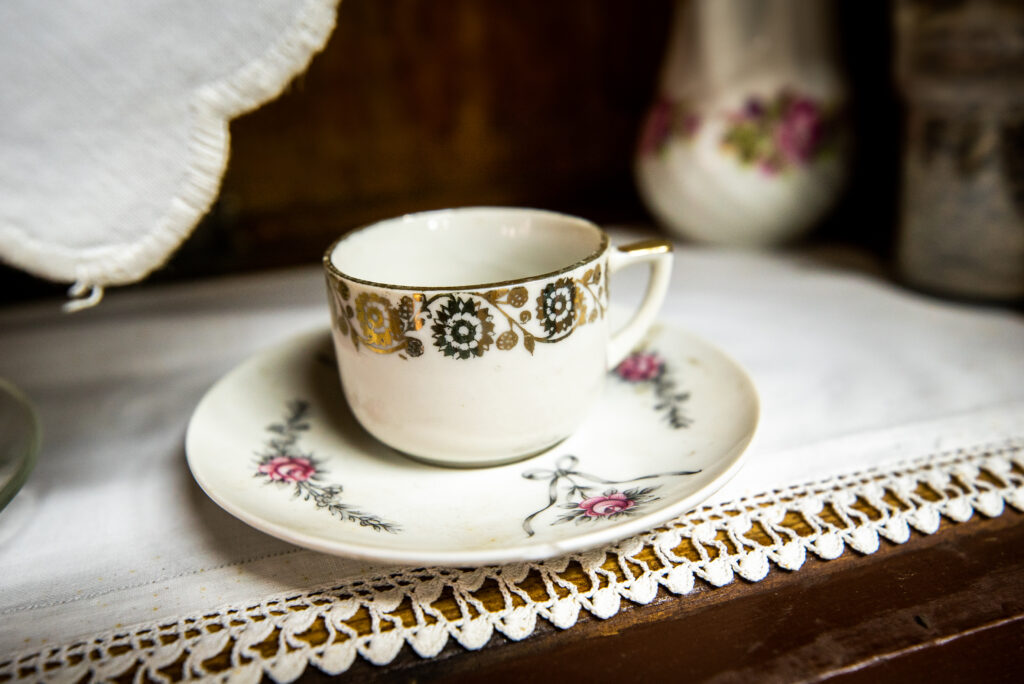
A single burner gas stove, tea cups, and ornate saucers crossed the Aegean Sea, reached Nea Ionia of Volos, and were later donated by their owners to the ‘Englezonisi’ Cultural Association of Asia Minor Greeks of Nea Ionia, Magnisia, so that they could take their place in the community’s shared past and assist in their own way in the effort towards the preservation of its memory and history.
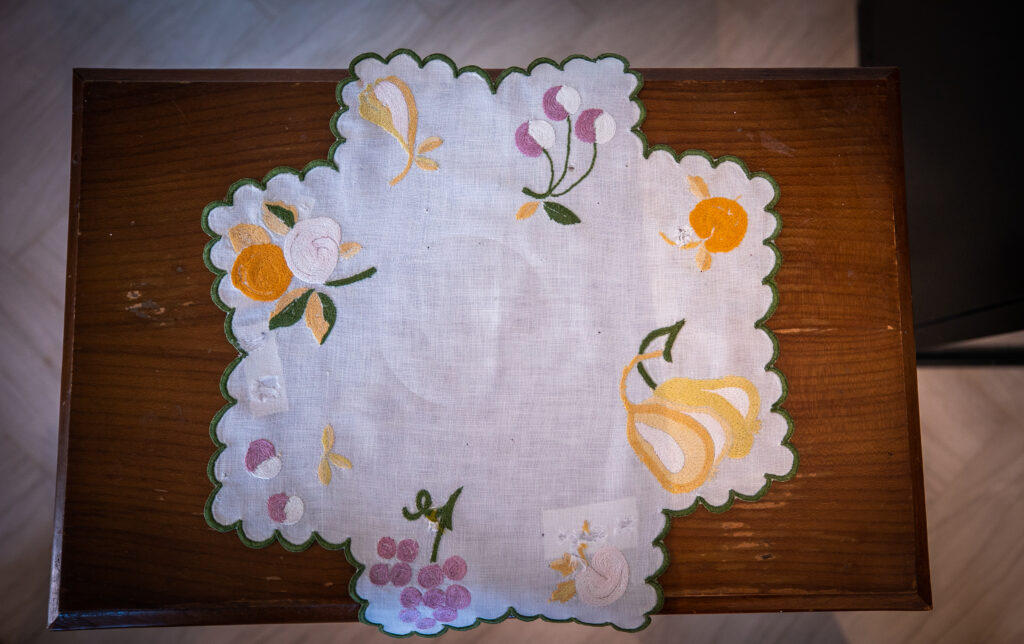
Charoula Panagiotidou has kept objects brought to Greece by her mother’s family, like this piece of white linen fabric with a colourful embroidered border and a small towel with a cross-stitched border, faded and worn with use.
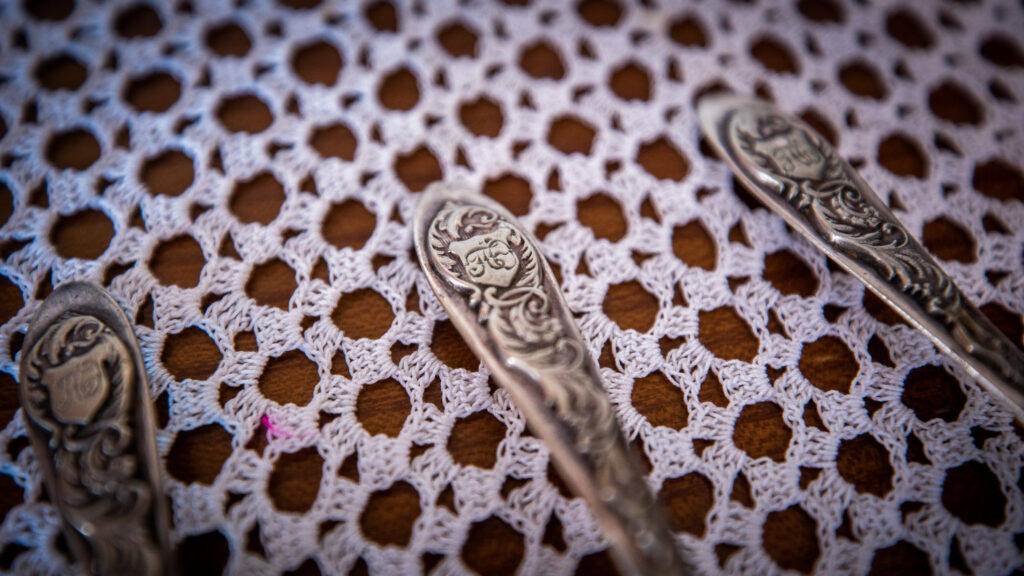
Charoula Panagiotidou has kept objects brought to Greece by her mother’s family. She still uses all of them in her everyday life and shares their stories with her children and grandchildren in an effort to keep the history of her family alive and preserve the memory of the house, the village, and the life they left behind.









